Everything You Always Wanted to Know about NOAA
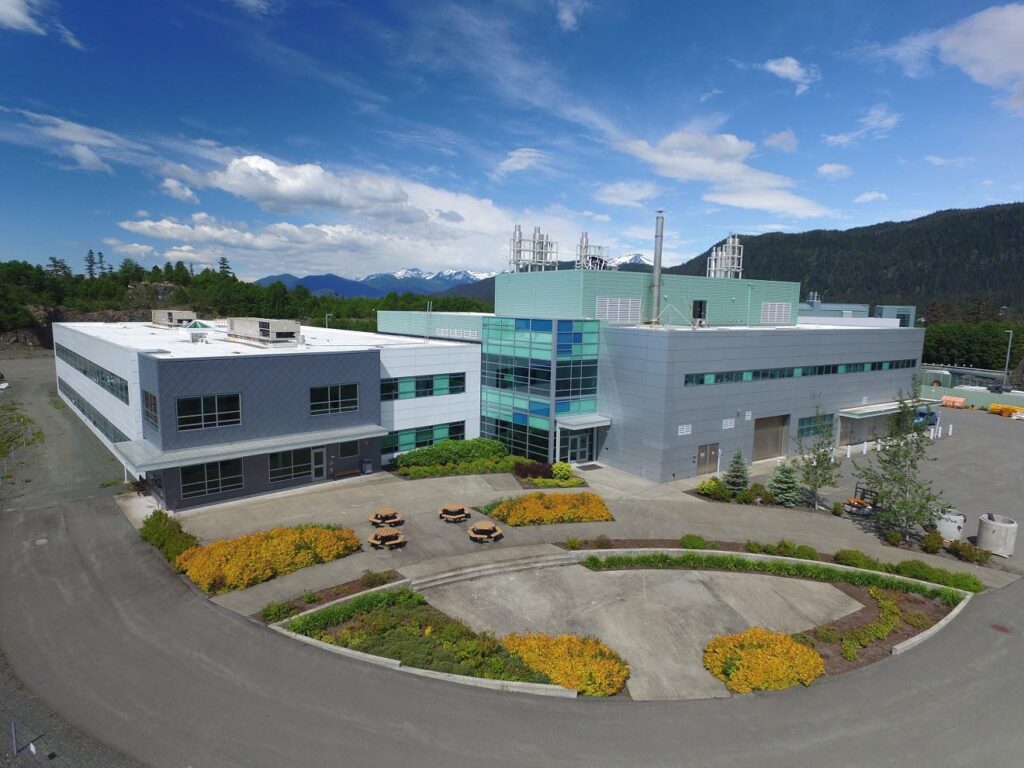
Credit: NOAA Fisheries
Ask any Sitkan – or indeed, any Alaskan (especially fishermen and mariners) — if they have heard of NOAA, and they will likely respond with a light in their eyes and a nod of their heads.
The acronym “NOAA” stands for National Oceanic and Atmospheric Administration. This federal agency was organized in 1970 under the US Department of Commerce. The agency’s stated purpose was to “serve a national need ‘…for better protection of life and property from natural hazards…for a better understanding of the total environment…[and] for exploration and development leading to the intelligent use of our marine resources…” NOAA believes it fills key roles “in shaping international ocean, fisheries, climate, space and weather policies.” From https://www.noaa.gov/noaa-legal-history.
Precursors of NOAA date back to the 1800s: the US Coast and Geodetic Survey (1807, under President Jefferson), the US Weather Bureau (founded in 1870), and the US Commission of Fish and Fisheries (founded in 1871). From https://www.noaa.gov/heritage/our-history.
NOAA from A Bird’s Eye View
On an icy day in March of 2024 in a downtown office in Juneau’s Federal building, Regional Administrator Jon Kurland and Public Affairs Officer Julie Fair presented a snapshot – a bird’s eye view, if you will – of the National Marine Fisheries Service (NOAA Fisheries in plain language) and its place in the larger NOAA organization – which also includes: the National Weather Service, National Environmental Satellite Data and Information Service, National Ocean Service and Office of Oceanic and Atmospheric Research. More information on these is available at NOAA.gov.
NOAA Fisheries has a total of five regional offices in the United States. Alaska is one (an important one, said Kurland and Fair), and the others are New England/mid-Atlantic, Southeast, Pacific Islands and West Coast.
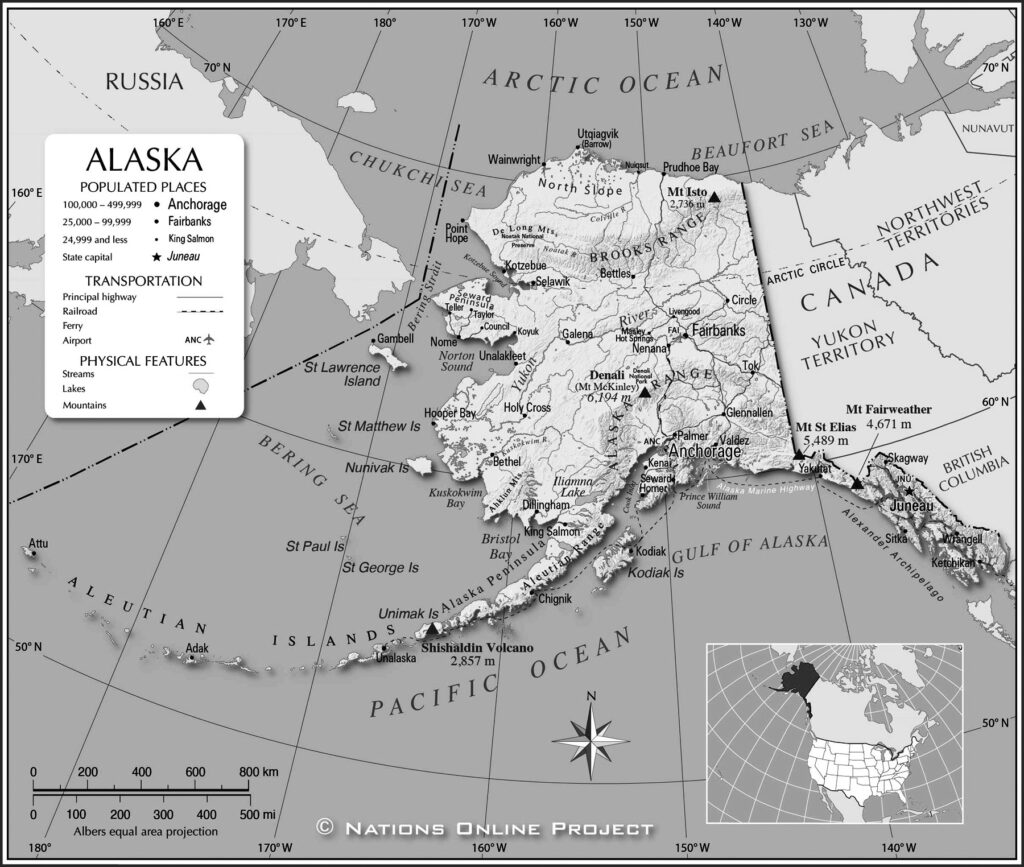
Credit: Nations Online Project
NOAA Fisheries operates at multiple sites in Alaska, including two in Juneau. Besides the regional HQ downtown, there is the “Ted Stevens Marine Research Institute” – NOAA’s Lena Point facility that houses the Auke Bay Lab of the Alaska Fisheries Science Center.
Alaska truly is seen as pivotal in NOAA Fisheries overall mission, since approximately sixty percent of all U.S. seafood is from Alaska. This region of NOAA “oversees sustainable fisheries that produce about half the fish caught in U.S. waters, contributing more than $7 billion to the national economy and supporting our nation’s food security. Our area of responsibility includes nearly 1.5 million square miles (70 percent of the total U.S. continental shelf) of the North Pacific Ocean, including the Arctic Oceans (Chukchi and Beaufort seas), Gulf of Alaska, and the eastern Bering Sea.” From https://www.fisheries.noaa.gov/about/alaska-regional-office.
NOAA’s various divisions aim for coordination to “maximize sustainable fisheries” and to “recover and preserve protected species” while conserving habitat and managing “legal permitting for federally managed fisheries of the North Pacific.” From the Alaska Region website: “Together, NOAA Fisheries Alaska Regional Office and the Alaska Fisheries Science Center help ensure the sustainability of these marine resources for generations.” The various parts of the Science Center provide data to “the North Pacific Fishery Management Council, the NOAA Fisheries Alaska’s Regional Office, fishing industries, state and federal regulators, and international treaty bodies.”
The laboratory out at Lena Point/Auke Bay, noted Kurland, also interacts extensively with the University of Alaska Southeast, University of Alaska Fairbanks, and the Alaska Department Of Fish & Game.
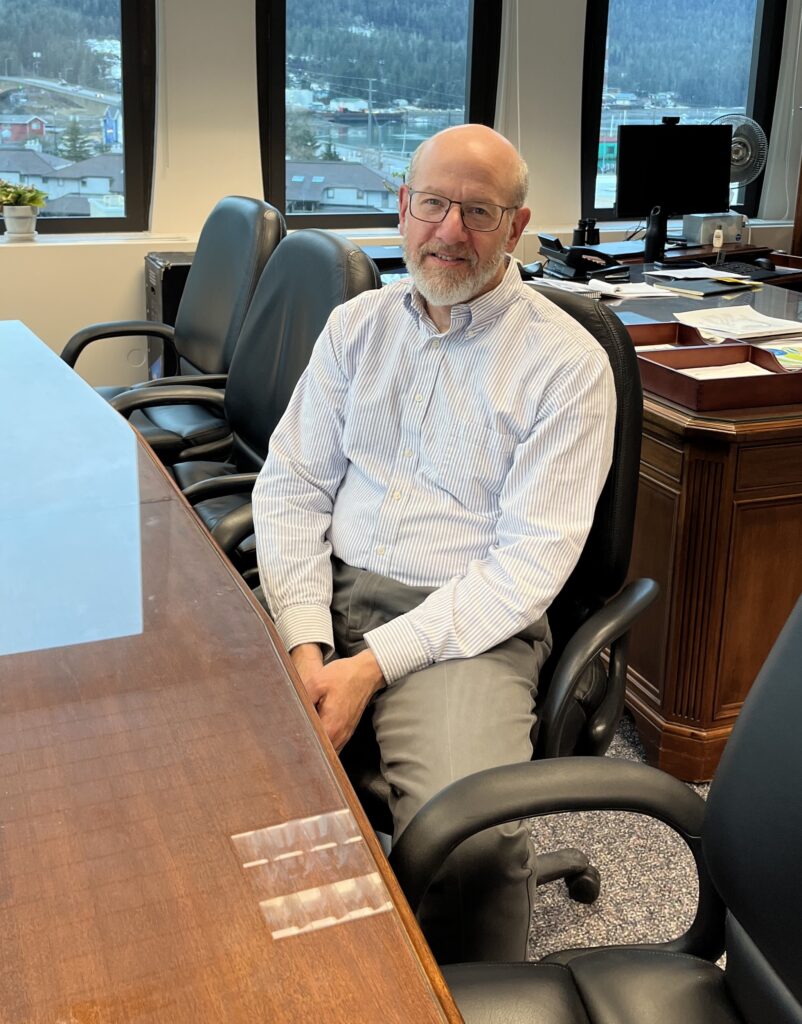
John Kurland Credit: Suzanne Portello
Supporting Sustainable Fisheries
Kurland said that “NOAA’s principal jurisdiction is in federal waters, from 3-200 nautical miles offshore, as established by the Magnuson-Stevens Act (MSA).” The act, enacted in 1976, established 8 regional councils (one of which is the North Pacific Fisheries Management Council, or NPFMC). The MSA has been reauthorized a few times, with amendments which attempted to better address the needs of stakeholders. The NPFMC makes recommendations to NOAA, which NOAA can approve (or not) and implement as indicated (quotas, by-catch, etc.)
Fair noted that the ‘Stevens’ on the law’s name was Alaska’s late Senator Ted Stevens, and that the law was “somewhat based on the State of Alaska’s fishery management system fit into the management of federal fisheries in Alaska…” – the latest Congressional reauthorization of the MSA being in July of 2018. The stated intent of the MSA was to “direct NOAA Fisheries and the Councils to work together to get the most out of our fisheries for food and economic well-being, while conserving ecosystem health and fish stocks for continued productivity to benefit future generations of fishing families and coastal communities,” said Fair.
For more about NOAA’s take on the MSA, go to https://www.fisheries.noaa.gov/topic/laws-policies/magnuson-stevens-act.
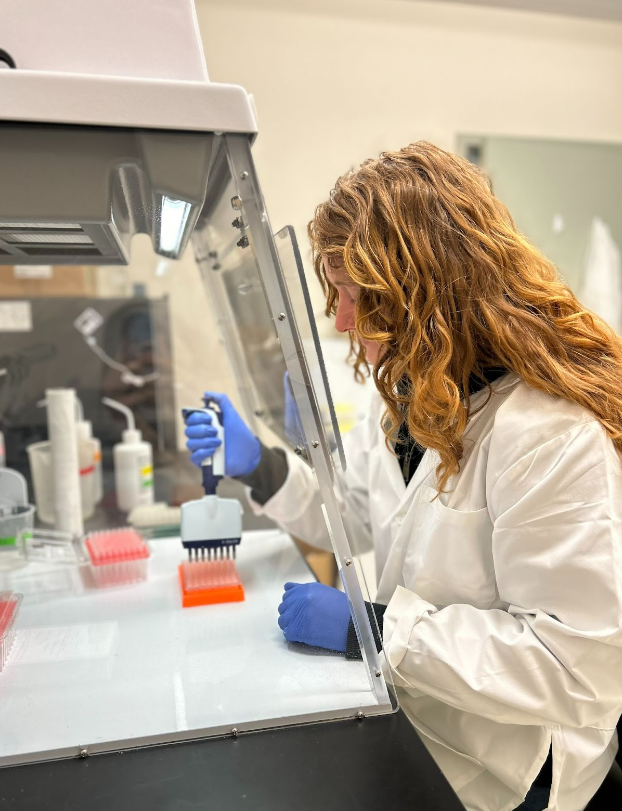
As part of a research project into the pres-
ence of harmful algal blooms in Southeast Alaska, NOAA scientist Juliana Cornett pre- pares seawater samples for eDNA analysis at Auke Bay Lab in Juneau. Credit: NOAA Fisheries/Jessica Whitney.
Supporting Sustainable Use and Sustainable Seafood
Kurland described “sustainable use” as “a level of resource use that doesn’t deplete the stocks over time. Fisheries and levels of use of the resources, also of course, impact on every other part of the ecosystem.”
To this end, NOAA Fisheries put out a “National Seafood Strategy” in 2023.
NOAA also works with the State of Alaska on identifying “Aquaculture Opportunity Areas (AOAs)” Read more at https://www.fisheries.noaa.gov/alaska/aquaculture/identifying-aquaculture-opportunity-areas-alaska
In Alaska, explained Kurland, aquaculture encompasses seaweed and shellfish culture (mainly oysters, in terms of culture). The website says, “NOAA Fisheries is working to increase populations of bivalve shellfish in coastal waters — including oysters, clams, and mussels…” from https://www.fisheries.noaa.gov/alaska/aquaculture/alaska-region-aquaculture.
Kurland said that aquaculture (and its related subset, mariculture) “is definitely an area of potential growth, partly because it “lends itself to times of the year when fisheries are not open” – and the general philosophy is “it’s nice to be diversified.”
See NOAA Fisheries website for more about NOAA’s activities in support of endangered species conservation, marine mammal protection and habitat conservation.
Unique Roles of NOAA’s Alaska Region
The importance of the Alaska Regional Office, said Kurland, “lies in its international reputation for sustainable management of fisheries.”
He also mentioned the “Community Development Quota Program” – focusing on Bering Sea communities. The CDQ Program “allocates a percentage of all Bering Sea and Aleutian Islands quotas for groundfish, prohibited species, halibut, and crab to eligible communities. The stated purpose is to 1) Provide eligible western Alaska villages with the opportunity to participate and invest in fisheries in the Bering Sea and Aleutian Islands Management Area; 2) Support economic development in western Alaska; 3) Alleviate poverty and provide economic and social benefits for residents of western Alaska; and 4) Achieve sustainable and diversified local economies in western Alaska. From: https://www.fisheries.noaa.gov/permit/alaska-community-development-quota-cdq-program-applications-and-forms.
Another pivotal feature of NOAA in Alaska, Kurland added, is the protection of marine mammals, including subsistence hunting by Alaska Natives. “Subsistence use of marine mammals is unique in Alaska.”
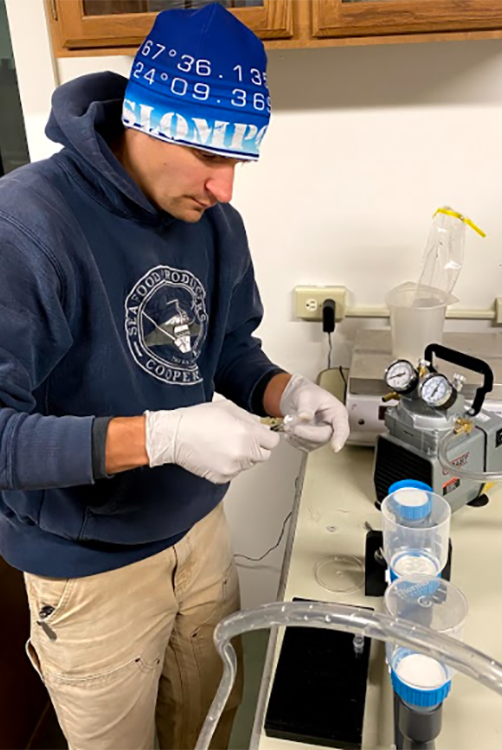
NOAA scientist Charlie Waters prepares eDNA samples for transport to Auke Bay Laboratory and testing for the presence of invasive European green crabs. Credit: NOAA Fisheries/Dave Nicolls.
Young People and Charismatic Creatures
Outreach to young people includes the Ocean Guardian Schools Program – to help teachers educate students. Kurland said he felt that NOAA needs to do more in terms of outreach and publicizing. He did note that NOAA has some Internship Programs, which are a “potential stepping off point.”
Admittedly, NOAA is tasked with navigating complicated waters.
Kurland phrased it this way: “Marine resources are so important (both fisheries and marine mammals). Allocation is important and contentious. Partly because there is such a diverse group of stakeholders, from industrial factory trawlers to Mom-and-Pop trollers.”
Marine mammals, such as whales, seals and sea lions, he noted, are “charismatic animals” and the public perception of their needs is not always accurate.
For example, there is wildlife viewing. Whale-watching (which on the surface may seem like a pretty benign, non-invasive activity) can actually harass the animals. In Alaska, this has been mostly focused on Humpbacks. Often, at the times of year when “viewings” are held, humpbacks are in the process of feeding – when it’s important for the creatures to be undisturbed.
Likewise, pinipeds (seals and sea lions) –“they haul-out to rest – it’s part of their survival mechanism.”
When asked if working for NOAA might be in some ways like working for the US Forest Service – “people who love trees want to work for them but maybe the work actually turns out to be something different?” In answer, Kurland summed up, “NOAA Fisheries has a highly educated workforce, people who are passionate about conservation and sustainable use.”
~ by Suzanne Portello
Additional Links and References:
The NOAA (Commissioned Officers) Corps supports the carrying out of the NOAA mission, as officers on ships, for example. https://www.omao.noaa.gov/noaa-corps
Additional links for US weather monitoring history: https://www.weather.gov/timeline and https://www.weather.gov/mob/history
